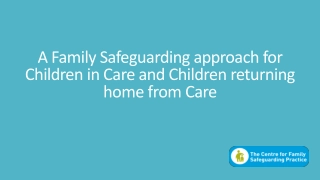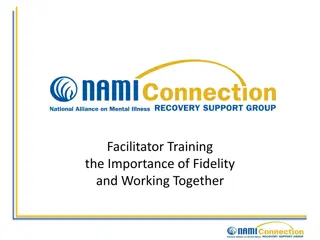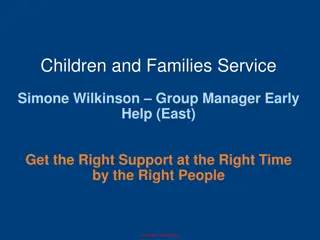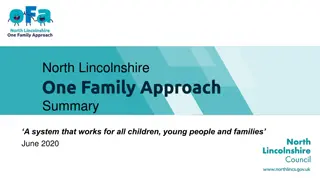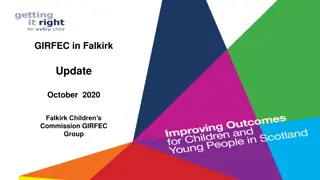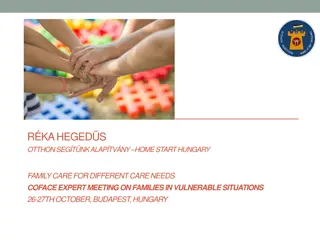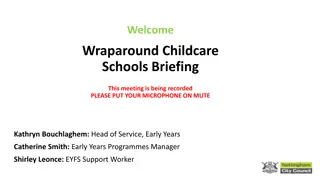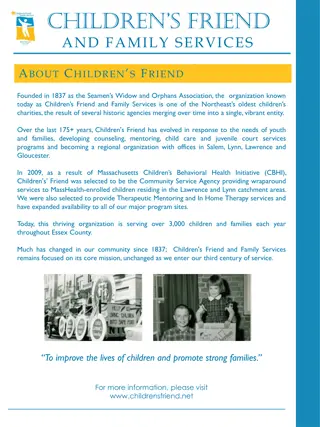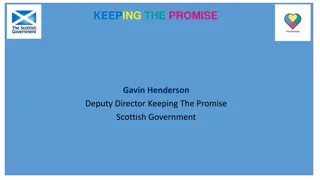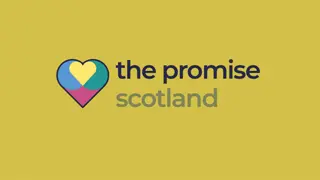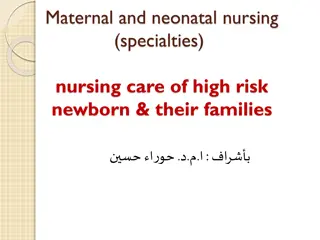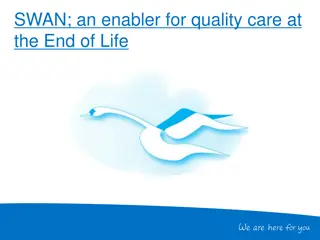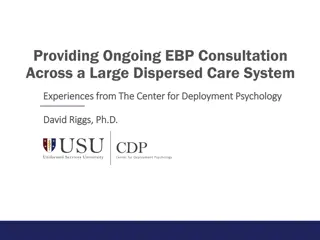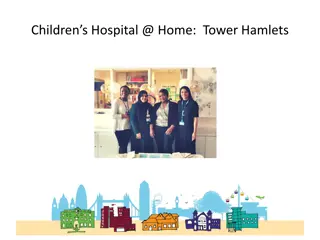High Fidelity Wraparound Systems of Care: A Comprehensive Approach for Children and Families
High Fidelity Wraparound (HFW) is an intensive team-based planning process designed to deliver coordinated, comprehensive, and holistic care to children, youth, and families facing complex needs and mental health challenges. It involves a multidisciplinary team, family members, care managers, and various supports to ensure the well-being of high acuity youth in the home and community. HFW follows evidence-based practices and emphasizes collaboration between families, the HFW team, and community providers to provide effective care.
Uploaded on Sep 28, 2024 | 3 Views
Download Presentation

Please find below an Image/Link to download the presentation.
The content on the website is provided AS IS for your information and personal use only. It may not be sold, licensed, or shared on other websites without obtaining consent from the author.If you encounter any issues during the download, it is possible that the publisher has removed the file from their server.
You are allowed to download the files provided on this website for personal or commercial use, subject to the condition that they are used lawfully. All files are the property of their respective owners.
The content on the website is provided AS IS for your information and personal use only. It may not be sold, licensed, or shared on other websites without obtaining consent from the author.
E N D
Presentation Transcript
High Fidelity Wraparound SYSTEMS OF CARE PRESENTERS: ROGELIO ESPINAL & KIM CONNOLLY : ASTOR SERVICES FOR CHILDREN AND FAMILIES
What is HFW? HFW is an intensive team-based planning process intended to provide coordinated comprehensive holistic youth and family driven care to meet the complex needs of children, youth and families who have multiple system involvement and who may experience serious mental health or behavioral challenges. HFW is evidence based and have shown success when implementing fidelity model to maintain high acuity youth safely and successfully in the home and community
Principles of Wraparound
Who and What is involved? The team consists of family members, Care Manager, Peer Supports, Formal and Natural Supports Monthly Children and Family Team Meetings Strength based planning to meet underlying needs Collaboration between family, HFW team, and community providers
All teams had facilitator and formal supports Most teams had at least one caregiver Fewer than half of teams had informal supports on the team
Who Is Appropriate for HFW? Medicaid and Non-Medicaid clients CANS High Acuity Meets Health Home criteria under single qualifying condition of Serious Emotional Disturbance Family is willing to participate Individuals who have received behavioral health services and/or are involved with two or more service systems
Appropriateness continued: (must meet 1 of the following criteria and show documented evidence) Emerging or imminent risk of out of home placement Returning home from out of home care or treatment Inpatient hospitalization (mental health, substance abuse or physical health) in last 6 months Multiple engagements in the past 12 months with community crisis based services (911, ER visit, Mobile Mental Health, HBCI) Imminent risk for or has had multiple instances in the last 6 months of change of placement (daycare, school, extracurricular activities due to significant behavioral issues due to mental health)
Four Phases of Wraparound 1 2 3 4 Phase 1: Engagement and team preparation Orient families Stabilize crises Assess strengths and needs Form a vision Identify Team members Phase II: Planning Hold initial CFT meeting Orient family Create plan focusing on strengths and underlying needs Identify services and support Phase III: Implementation Hold regular meeting Implement plan Review progress Revise plan Phase IV: Transition Define when vision and goals have been met Celebrate!!! Follow up with family
Health Home vs HFW Health Home High Fidelity Wraparound 1 Care manager Child and family team Interdisciplinary Meetings every 6 months Natural supports Monthly Child and Family Team meetings 1 face to face and a core service Core Services as needed Care coordination Weekly Contacts Higher caseloads depending on acuity mix Strength's based and family driven approach 10-12 clients on caseload
NYC Pilot Process Staff explains each of their roles Care manager Family Peer advocate Youth peer advocate Supervisor Referrals: Single Point of Access (SPOA) Health Home (internal referrals) What to expect from HFW services Weekly contact Monthly Child and Family Team meeting A staff of 3 Wrap around services Schedule with family to meet with staff Home/community/school Team explains High Fidelity
NYC Pilot HFW Team Family Peer Advocate Provides one on one support to the parents/guardians Youth Peer Advocate Provides one on one support to the youth Care Manager Coordinates services Communicates with providers to ensure services are met Empowers and encourages youth to have a voice An advocate that can assist with education, legal, medical, housing, employment, parenting issues.... Communicates ensure to connect youth or family to resources, community events, and services to name a few. Empowers youth towards self determination Schedule weekly contacts Empowers the parent towards self determination
NYC Pilot High fidelity wraparound Successes Challenges Communication amongst the team members Not many providers available Informal supports CFTM have been frequent Team Cohesion Graduation/transition Defining of the roles/Overlapping roles Parents and youth receptive to services Salary/ staff retention Improvement in family dynamics Family challenges Successful development of Child and Family Team meetings Duplication of documentation Empowering clients to communicate needs
Depression, ADHD, severe internalizing challenges were common at enrollment Reason for Referral Diagnoses
Teams tended to indicate their HFW experience met model standards WFI-EZ Survey
Caregivers tended to agree that they received the core elements of HFW On a scale of 1 - 5
Age of enrollees skewed a little younger NYC Implementation Pilot
Decrease in Mental Health Spending with HFW
Improvement of CANS Acuity/Scores in HFW
High Fidelity Wraparound Hudson Valley Pilot Implementation Expansion and Sustainability Partnering and Servicing 4 Counties (Dutchess, Ulster, Orange and Columbia) Four Full time Care Managers, one full time Family Peer Advocate and one full time Youth Peer Advocate Training, monthly coaching and certification CFTSS process to obtain additional services/providers
High Fidelity Wraparound Hudson Valley Pilot Implementation Expansion and Sustainability Continued CYES process for clients who are Non-Medicaid at time of enrollment Revenue from different funding sources (SAMSHA Grant, Medicaid via CFTSS and Health Home services)
Quarterly Report Key Indicators Caseload: 12 per county/care manager Plan Entry into Wrap-NY Plan of Care Quality Team Composition CFTM rate and quality Assessment Entry into Wrap-NY
Hudson Valley Pilot Challenges/Barriers Successes Lack of Peer Support Workers Care manager has Increased collaboration opportunities with providers Salary/Retention of staff Difficulty getting providers to attend meetings in person Distribution of action steps Success of CFTM: strength based, solution focused, child involvement and positivity Families being able to identify natural supports Challenges with building team and collaboration with outside providers Decrease in need for crisis interventions


